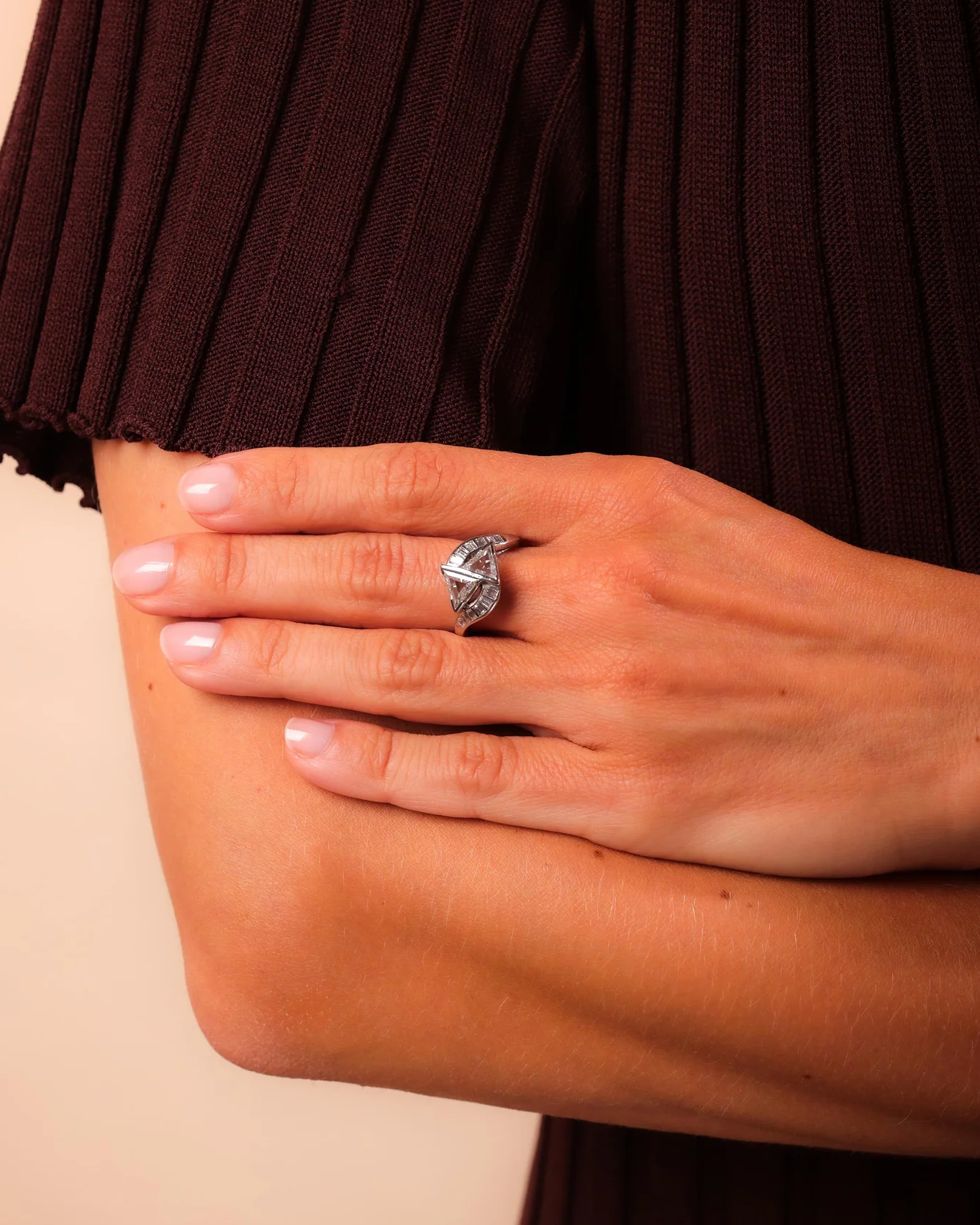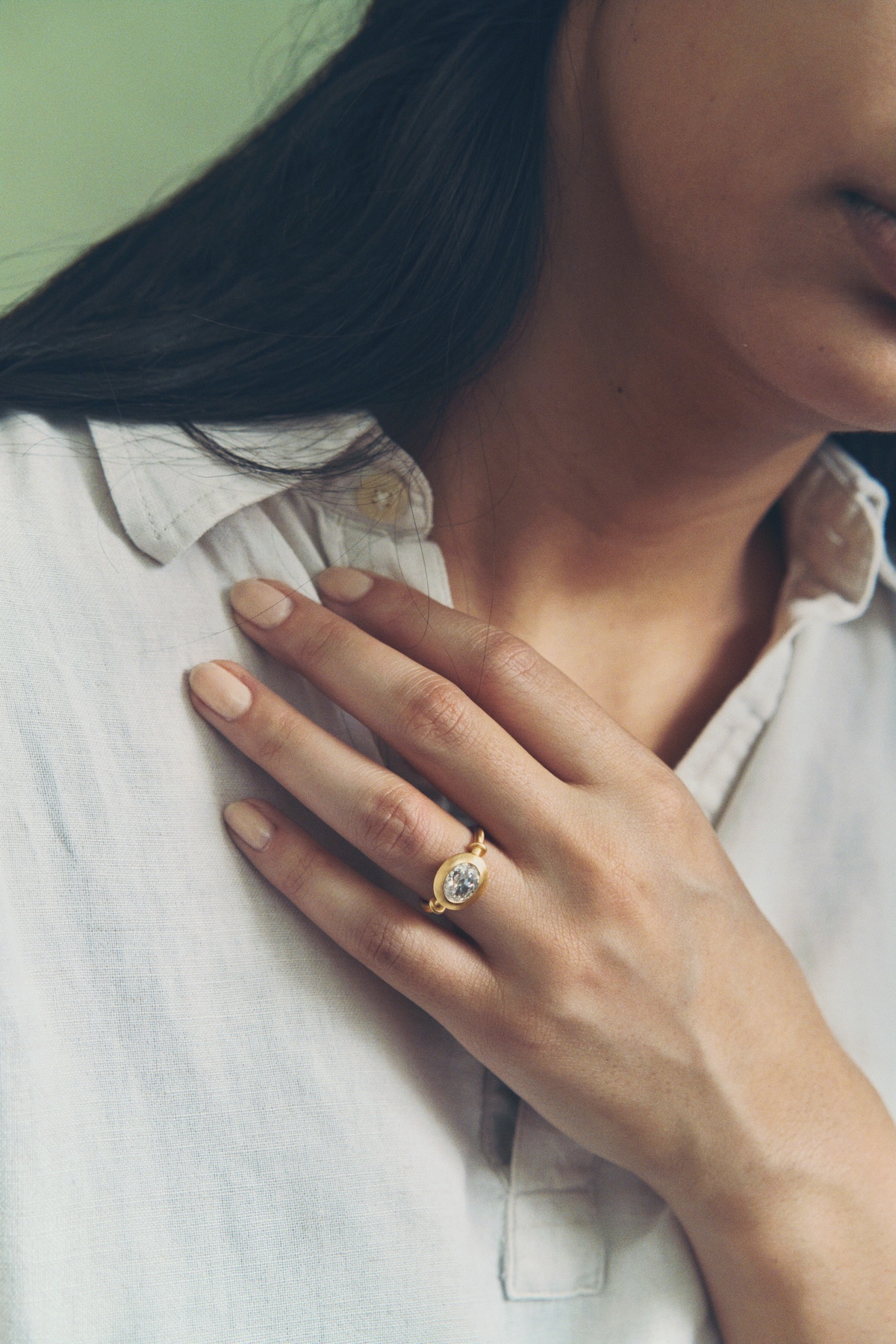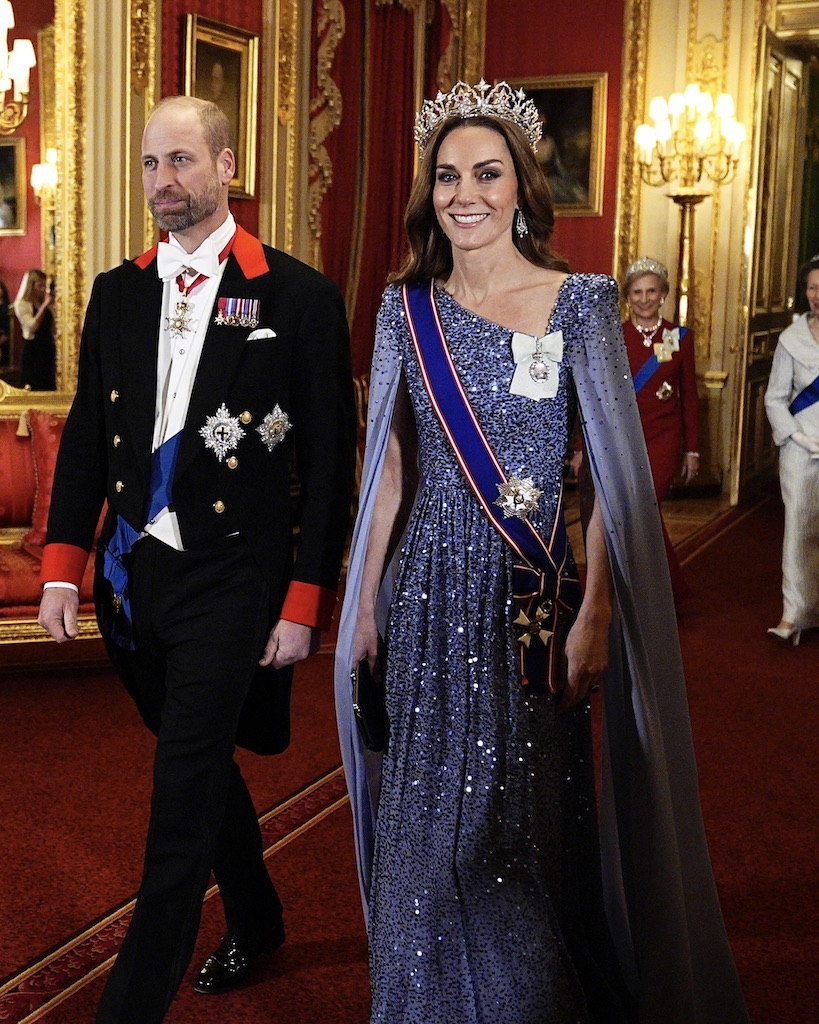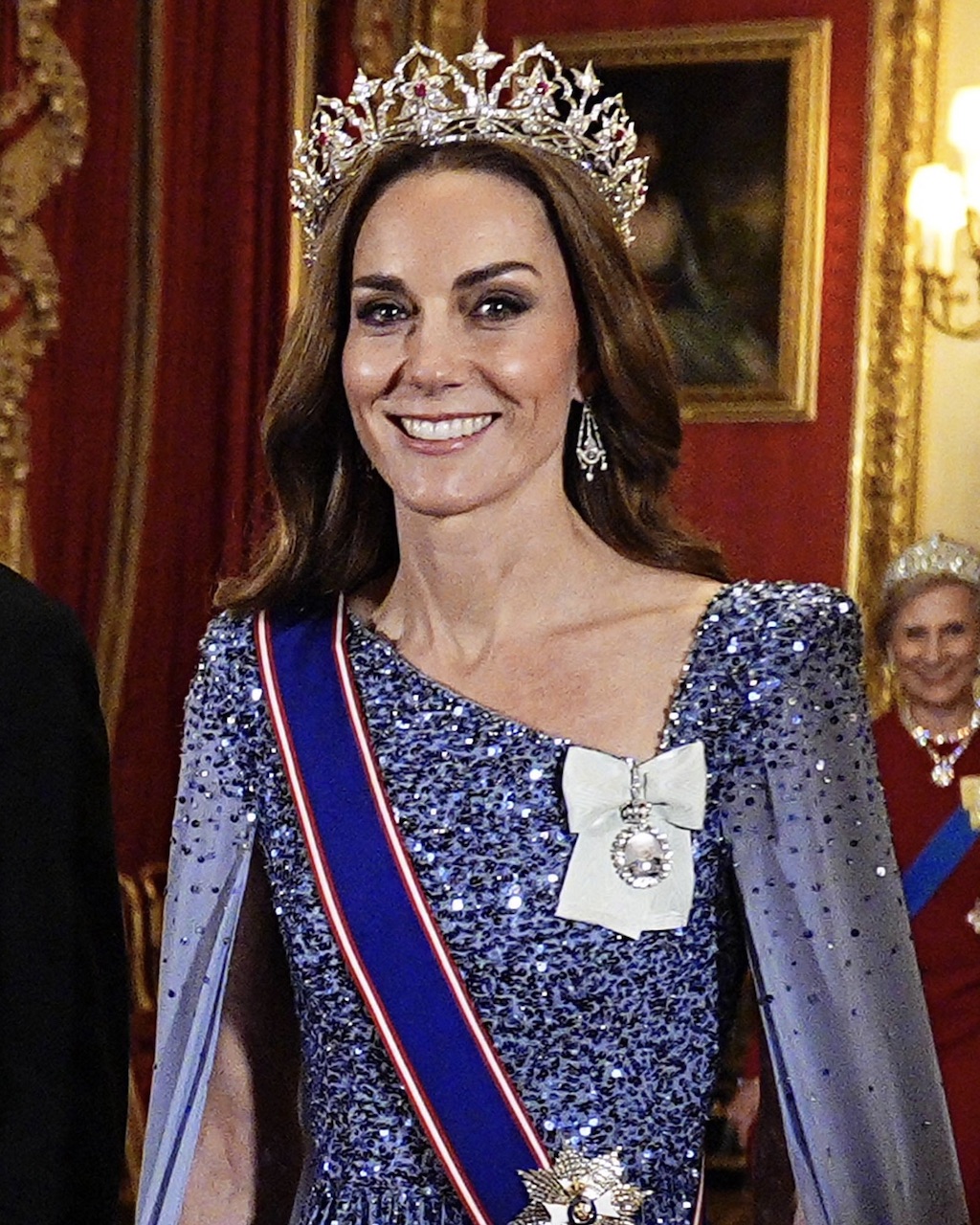< Historic Diamonds / Famous Diamonds
The Ultra-Rare Mellon Blue Diamond Sells for $25 Million
This exceptional blue diamond was sold at Christie’s Geneva and carries a historic provenance and the kind of singularity that has captivated collectors all over the world.
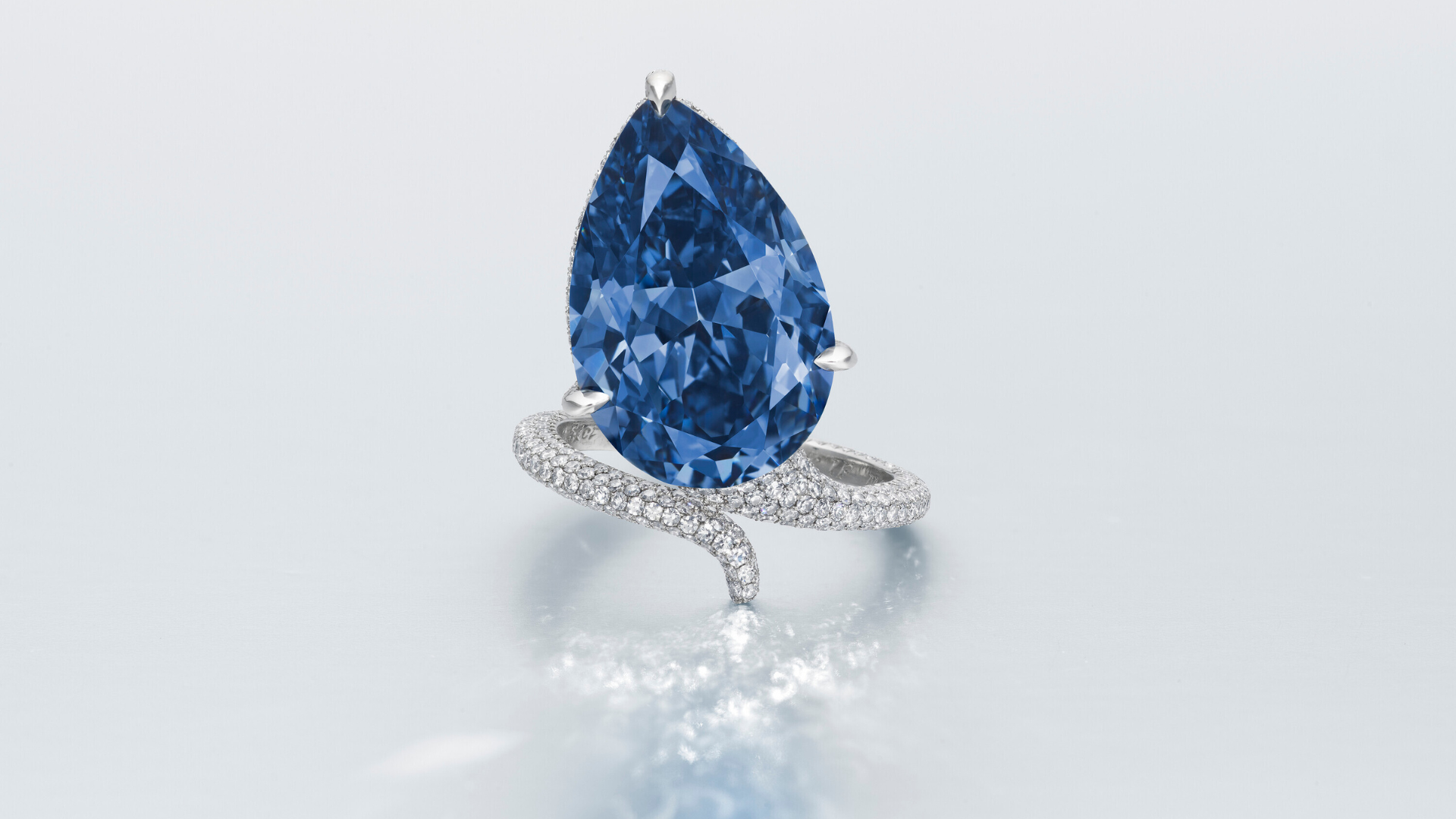
The Mellon Blue Diamond (Courtesy of Christie’s Auction House)
Christie’s Auction House announced that one of the world’s most extraordinary diamonds has found a buyer: the Mellon Blue. This 9.51-carat Fancy Vivid Blue diamond, graded Internally Flawless, was offered in the Magnificent Jewels auction on November 11 in Geneva, where it sold for approximately $26.6 million.
Once worn by the legendary American philanthropist Bunny Mellon, the Mellon Blue has already made headlines as one of the highest-priced colored diamonds ever sold at auction. Now, more than a decade after its record-breaking appearance, it has returned to the world stage.
The Mellon Blue is far more than a dazzling stone—it carries a storied provenance, a touch of mystery, and the kind of rarity that has captivated collectors for generations. Ahead, learn more about this exceptionally rare natural diamond.
Meet the Expert

- Grant Mobley is the Jewelry & Watch Editor of Only Natural Diamonds.
- He is a GIA Diamonds Graduate.
- He has over 17 years of jewelry industry experience, starting with growing up in his family’s retail jewelry stores.
What is the Mellon Blue Diamond?
The Mellon Blue diamond is an exceptional Fancy Vivid Blue diamond weighing 9.51 carats, graded Internally Flawless, most recently set as a ring.
“The extraordinary $25 million result achieved by The Mellon Blue—amounting to over $2.5 million per carat—cements its place among the most valuable diamonds ever sold and underscores the timeless appeal of natural fancy color diamonds. At 9.51 carats, this Fancy Vivid Blue diamond stands among the most exceptional ever discovered, comparable in both rarity and beauty to icons like the De Beers Blue and the Blue Moon of Josephine,” says Grant Mobley, Jewelry and Watch editor of Only Natural Diamonds.
“Natural fancy color diamonds remain among the world’s most coveted treasures precisely because their color is a natural wonder, created deep within the Earth over billions of years. As highlighted in the Natural Diamond Council’s Fancy Color Diamond Report, prices for these natural gems have risen by more than 240% since 2005, driven by a growing global appreciation for their rarity, authenticity and natural origin,” Mobley says. “When so much of our world is artificial, collectors continue to be inspired by the enduring beauty and irreplaceable rarity of natural gems.”
Bunny Mellon and the Legacy of the Mellon Blue Diamond
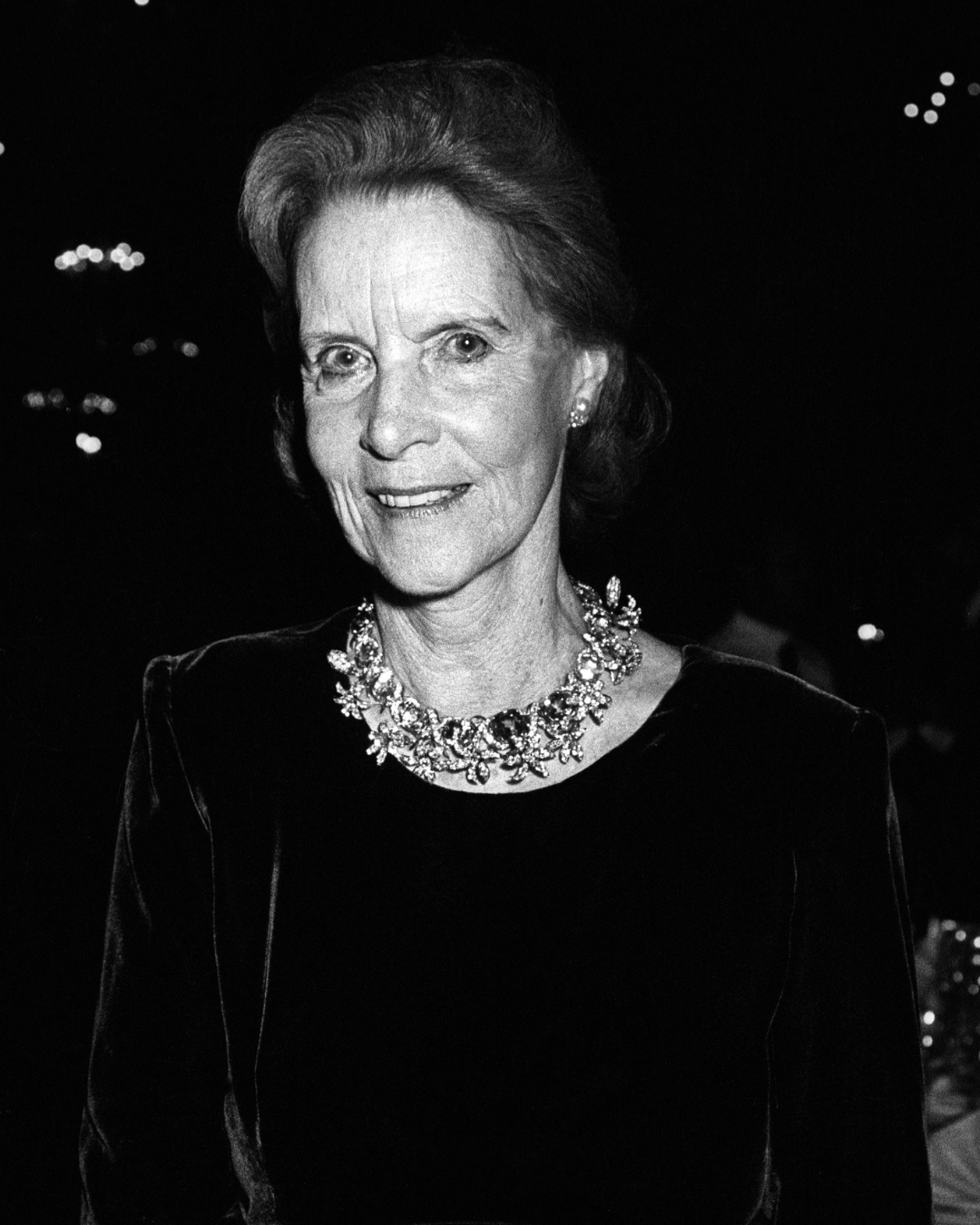
The Mellon Blue diamond has a storied provenance and was most recently owned by Rachel Lambert Mellon, better known as Bunny Mellon—an American horticulturist, philanthropist, and art collector. “Bunny Mellon was a symbol of elegance and sophistication, and her refined taste extended to her jewellery, which she selected with the same care and sensitivity she brought to her interiors and gardens,” shares Christie’s in a press release. Beyond her celebrated eye for art and design, Mellon famously redesigned the White House Rose Garden with Jackie Kennedy in 1962, created the landscape for Hubert de Givenchy’s home, and contributed to the restoration of the Potager du Roi at the Château de Versailles.
The Science Behind the Mellon Blue Diamond
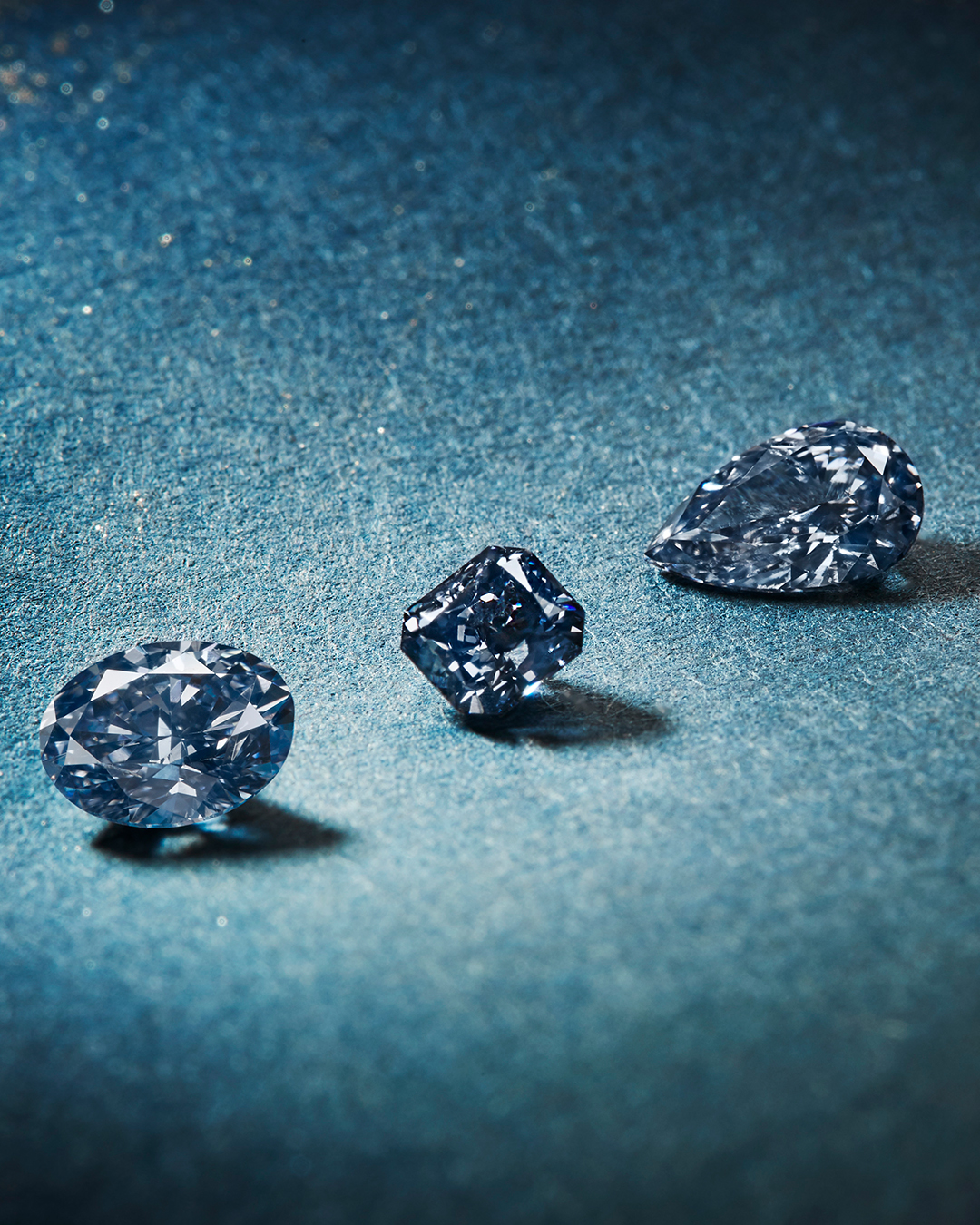
Blue diamonds owe their mesmerizing hue to trace amounts of boron within their crystal lattice. In rare instances, boron atoms replace carbon atoms in the diamond’s structure, enabling the stone to absorb red and yellow light and reflect the vivid blue that makes these gems so coveted. They also form deeper in the Earth’s crust than most diamonds, under even more extreme conditions of heat and pressure. And while they may resemble blue sapphires at first glance, the two could not be more different: sapphires are composed of corundum colored by titanium and iron and are estimated to be 10,000 times more abundant in nature.
The source of boron in Earth’s mantle remains an open geological mystery. Some scientists theorize it may have originated in ancient oceans, carried into the planet’s interior through subduction zones—where oceanic plates plunge beneath the surface. According to the Gemological Institute of America (GIA), in some cases blue coloration may also be linked to radiation exposure or the presence of hydrogen. Whatever the cause, the extraordinary convergence of pressure, heat, and boron is so rare that natural blue diamonds remain among the scarcest—and most valuable—of all fancy-colored diamonds.
What Makes Blue Diamonds So Valuable

Blue diamonds are among the rarest gemstones on Earth, making up fewer than 0.02% of all diamonds. Their scarcity stems from the extraordinary geological conditions required for their formation, including the presence of trace boron deep within the Earth’s mantle. This rarity, combined with their mesmerizing color, flawless clarity in top specimens, and often remarkable provenance, drives demand to extraordinary heights.
At auction, blue diamonds consistently command record-breaking prices, not only because collectors prize their beauty but also because they represent an asset class as enduring as it is alluring. Each one is truly one-of-a-kind, and with so few ever reaching the market, their value is magnified by both rarity and mystique.
Other Famous Blue Diamonds

The Mellon Blue belongs to a rich lineage of extraordinary blue diamonds.
The most legendary of all is the Hope Diamond, a 45.52-carat Fancy Deep Grayish-Blue gem whose ownership has spanned French royalty to American heiresses. Today, it resides at the Smithsonian Institution in Washington, D.C., where it continues to attract millions of visitors each year. Beyond its beauty, the Hope is steeped in lore: for centuries, it has been rumored to carry a curse, said to bring misfortune to its owners—a legend that has only added to its mystique.
Another jewel of renown is the Wittelsbach-Graff Diamond, a 31.06-carat Fancy Deep Blue once part of the Austrian and Bavarian crown jewels. When Christie’s sold it in 2008 for over $24 million, it set a world record and cemented its place in history as one of the great diamonds of European heritage.
In 2015, the Blue Moon of Josephine pushed blue diamonds into new territory when it sold at Sotheby’s Geneva for $48.4 million, setting a record price per carat. Weighing 12.03 carats and graded Internally Flawless, its vivid saturation made it one of the rarest diamonds ever seen.
Just a year earlier, in 2016, the Oppenheimer Blue made headlines of its own. At 14.62 carats, this Fancy Vivid Blue diamond became, at the time, the most expensive blue diamond ever sold, achieving $57.5 million at Christie’s Geneva. Named for Sir Philip Oppenheimer of the De Beers family, the stone is celebrated for its extraordinary color, elongated emerald cut, and impeccable provenance.
Discovered in 2018 at Botswana’s Orapa mine, the Okavango Blue is a 20.46-carat Fancy Deep Blue diamond and the largest of its kind ever found in the country. Owned by the Okavango Diamond Company, it was named for Botswana’s Okavango Delta, a UNESCO World Heritage Site, underscoring the nation’s rich natural heritage. Unlike many other famous blue diamonds, the Okavango Blue has not been sold at auction; instead, it stands as a national treasure and a symbol of Botswana’s prominence in the diamond world.
The Mediterranean Blue, a 12.03-carat Fancy Vivid Blue, stunned the market with its intense oceanic hue and exceptional purity. Its appearance at Sotheby’s High Jewelry Sale in Geneva in May of 2025 further demonstrated the unrivaled demand for top-quality blue diamonds on the global stage.
The Future of the Mellon Blue Diamond
Now, the Mellon Blue takes its place among these icons. With its 9.51-carat size, Fancy Vivid Blue grade, flawless clarity, and Bunny Mellon provenance, it dazzled at Christie’s Geneva and secured its legacy as one of the most important blue diamonds of the modern era. Though the winning bidder has not been disclosed, the sale price and renewed global attention ensure that the stone’s next chapter—whether in a private collection, museum, or future auction—will be closely watched by the international jewelry community.



